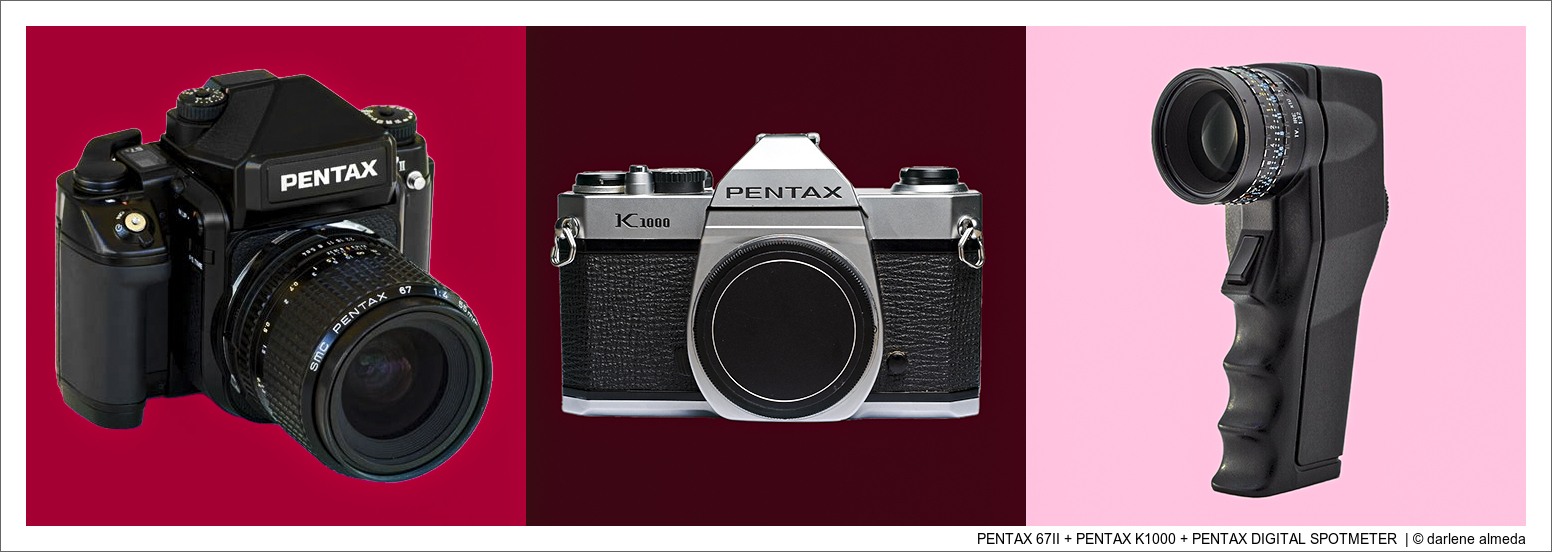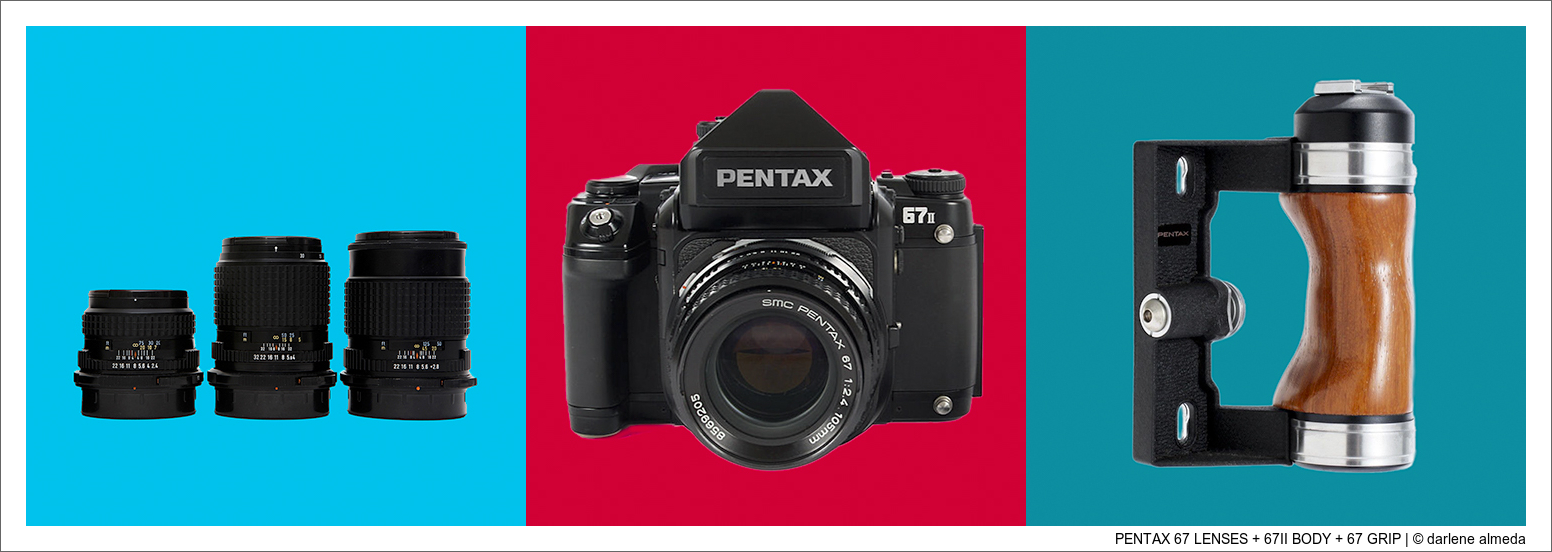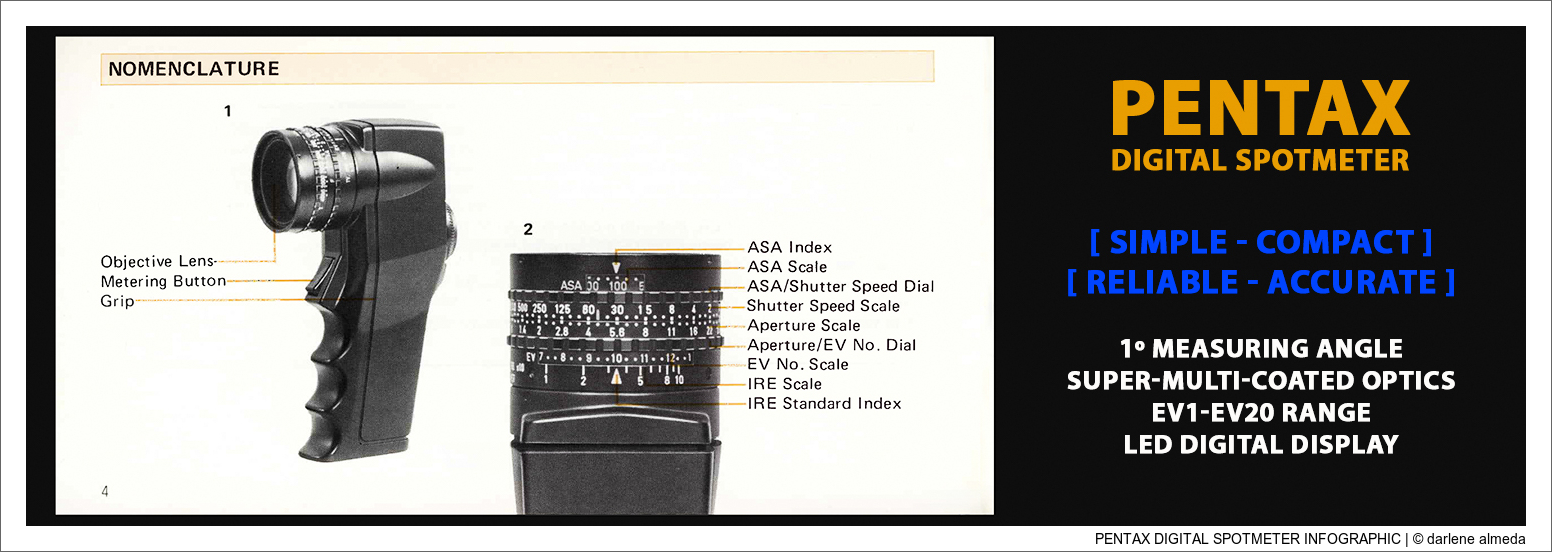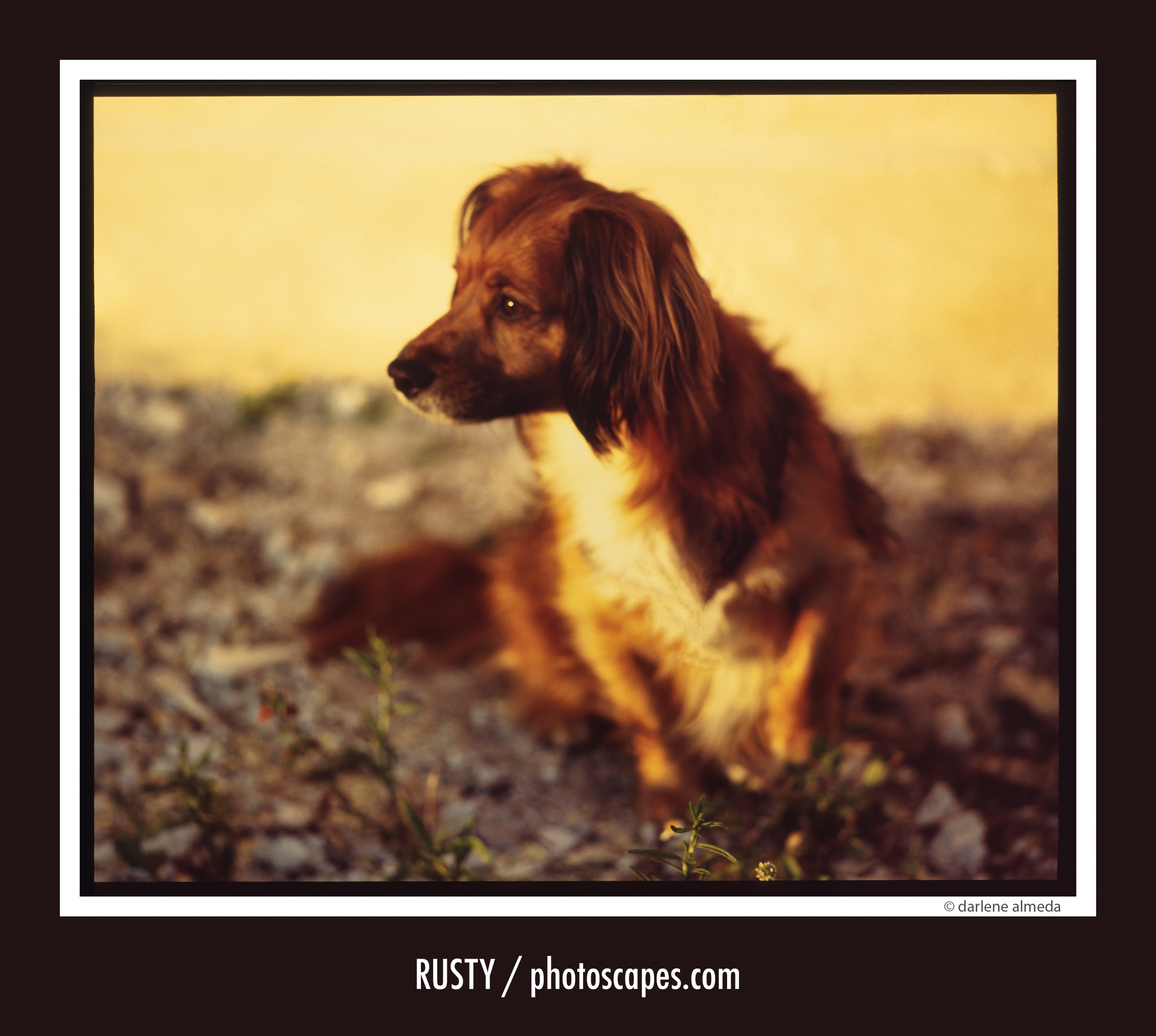PENTAX 67II + PENTAX K1000 + PENTAX DIGITAL SPOTMETER
PENTAX CAMERAS & GEAR
CAMERA: Pentax 67 II
LENSES: 55/4, 100/4M, 165/4 LS, 55-100/4.5, 90-180/5.6
LIGHT METER: Digital Spotmeter
Pentax is renowned for producing high-quality cameras and optical equipment for photography. Founded in 1919 as Asahi Optical Joint Stock Co., Pentax has a long history of innovation and expertise in the imaging industry.
Pentax gained popularity for its film cameras, specifically in the 35mm SLR category. The company released various models over the years, including the Spotmatic and K-series cameras, which gained recognition for their durable construction, advanced features, and exceptional image quality. I have a K-1000 that my son gifted me when he went on a trip and found it in an antique store, although I have never tried it (yet).
In 1960, the first Pentax Spotmeter, also known as the Pentax Spotmeter V, was introduced. This meter became popular among professional photographers due to its precision and ease of use. In 1977, Pentax introduced the Digital Spotmeter, which is still popular among large-format photographers like myself. See my article “How To Use The Zone System In Photography.”
With the advancement of digital photography, Pentax successfully transitioned into the digital era by launching a range of digital SLR cameras. They introduced their inaugural medium-format digital camera, the Pentax 645D, in March 2010. The camera features a 40MP, 44 mm × 33 mm CCD sensor, and later, in February 2014, the 51.4MP CMOS sensor 645Z was announced.
The Pentax K-1 Mark II DSLR, with its 36.4MP and Pixel Shift Resolution II technology, is very popular amongst enthusiastic prosumers. You cannot go wrong shooting with a Pentax.
PENTAX 67II
PENTAX 67 LENSES + 67II BODY + 67 GRIP
I made a few of my favorite images with the Pentax 67II when I had one. Looking at the 6×7 slides on a light box is a treat to my eyes. The camera proved a tripod queen, which was a deal breaker for me. We can see where I missed focusing on Rusty, the dog image below, and that was because I should have used a tripod, but I love the image just the same. And isn’t that what photography should be about, especially when shooting candid, personal images?
When it became obvious that the 67II’s weight was too much for my petite arms, I traded it for a Mamiya 7II. The Pentax lenses and metering of the 67II were beautiful; I just physically could not handle the camera’s weight and heft for candid shooting, which is what I wanted it for. I had heard the Pentax 6×7 models were 35mm cameras on steroids. I understood why that saying hangs around because they are in an operational aspect similar to the last generation of Nikon SLRs I shot (great metering & lovely lenses), but much larger and heavier. When I pulled the trigger on the 67II, there was no mistaking the shutter was engaged because it was the loudest I could remember from a camera.
I purchased the kit new from a dealer in NYC and had them ship it to me because there were no camera stores locally where I could pick one up and look through it to see if it fit my hand, etc. If I could have done that, I never would have purchased it, but then again, I would not have known of its image-producing quality either.
If you can handle the weight and heft, it is a very nice medium format camera with superb lenses; at least, the lenses I used were. The prime lenses I used: 55/4, 100/4 Macro (loved it a lot), 165/4 LS (leaf shutter), and the two zooms: 55-100/4.5 and 90-180/5.6.
PENTAX DIGITAL SPOT METER
PENTAX DIGITAL SPOTMETER INFOGRAPHIC
The Pentax Digital Spotmeter is a compact and precise spotmeter that offers a different experience than the bulky 67II. It is remarkably user-friendly for those who prefer capturing black-and-white film with the zone system’s assistance. To make it even easier, get a Zone System Sticker (search eBay if the link is broken) or download this pdf and cut one out to make your own. I’d sandwich it between tape before fixing it around the meter dial. BTW, you do not have to be a Zonie to use and appreciate this fantastic spotmeter.
I have purchased the Pentax Digital Spotmeter three times for various reasons and the Sekonic L-488 Digi-Spot twice for on-location commercial assignments. One notable difference between the two digi-spot meters is that the L-488 can measure spot flash while the Pentax cannot. If the Pentax had flash reading ability, it might have been a suitable choice for my commercial work.
However, I am happy that the Pentax does not include flash functionality. I appreciate simplicity in tool design when I have a choice. The Pentax excels at measuring contrast differentials in a landscape scene, making it highly regarded for my black-and-white photography. I use other spotmeters like the Minolta Spotmeter F and Sekonic L-558R, and other photographers do as well for spotmeter reading and zoning. Still, my preference has always been for the Pentax Digital Spotmeter.






